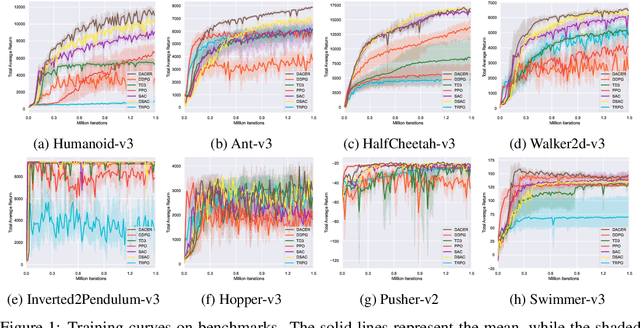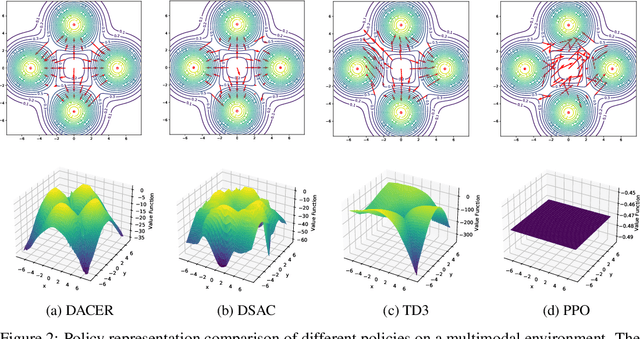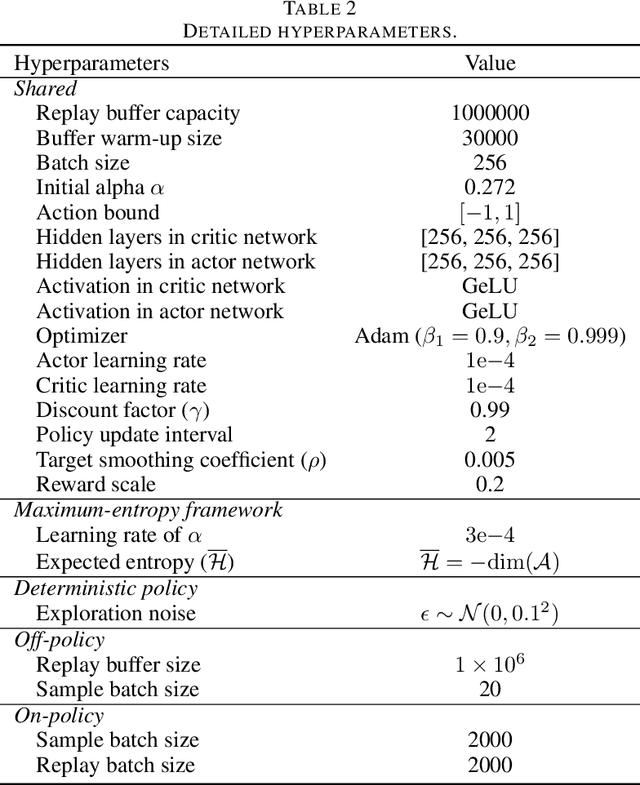Jiang Wu
Separator Injection Attack: Uncovering Dialogue Biases in Large Language Models Caused by Role Separators
Apr 08, 2025Abstract:Conversational large language models (LLMs) have gained widespread attention due to their instruction-following capabilities. To ensure conversational LLMs follow instructions, role separators are employed to distinguish between different participants in a conversation. However, incorporating role separators introduces potential vulnerabilities. Misusing roles can lead to prompt injection attacks, which can easily misalign the model's behavior with the user's intentions, raising significant security concerns. Although various prompt injection attacks have been proposed, recent research has largely overlooked the impact of role separators on safety. This highlights the critical need to thoroughly understand the systemic weaknesses in dialogue systems caused by role separators. This paper identifies modeling weaknesses caused by role separators. Specifically, we observe a strong positional bias associated with role separators, which is inherent in the format of dialogue modeling and can be triggered by the insertion of role separators. We further develop the Separators Injection Attack (SIA), a new orthometric attack based on role separators. The experiment results show that SIA is efficient and extensive in manipulating model behavior with an average gain of 18.2% for manual methods and enhances the attack success rate to 100% with automatic methods.
OpenHuEval: Evaluating Large Language Model on Hungarian Specifics
Mar 27, 2025Abstract:We introduce OpenHuEval, the first benchmark for LLMs focusing on the Hungarian language and specifics. OpenHuEval is constructed from a vast collection of Hungarian-specific materials sourced from multiple origins. In the construction, we incorporated the latest design principles for evaluating LLMs, such as using real user queries from the internet, emphasizing the assessment of LLMs' generative capabilities, and employing LLM-as-judge to enhance the multidimensionality and accuracy of evaluations. Ultimately, OpenHuEval encompasses eight Hungarian-specific dimensions, featuring five tasks and 3953 questions. Consequently, OpenHuEval provides the comprehensive, in-depth, and scientifically accurate assessment of LLM performance in the context of the Hungarian language and its specifics. We evaluated current mainstream LLMs, including both traditional LLMs and recently developed Large Reasoning Models. The results demonstrate the significant necessity for evaluation and model optimization tailored to the Hungarian language and specifics. We also established the framework for analyzing the thinking processes of LRMs with OpenHuEval, revealing intrinsic patterns and mechanisms of these models in non-English languages, with Hungarian serving as a representative example. We will release OpenHuEval at https://github.com/opendatalab/OpenHuEval .
Spot the Fake: Large Multimodal Model-Based Synthetic Image Detection with Artifact Explanation
Mar 19, 2025Abstract:With the rapid advancement of Artificial Intelligence Generated Content (AIGC) technologies, synthetic images have become increasingly prevalent in everyday life, posing new challenges for authenticity assessment and detection. Despite the effectiveness of existing methods in evaluating image authenticity and locating forgeries, these approaches often lack human interpretability and do not fully address the growing complexity of synthetic data. To tackle these challenges, we introduce FakeVLM, a specialized large multimodal model designed for both general synthetic image and DeepFake detection tasks. FakeVLM not only excels in distinguishing real from fake images but also provides clear, natural language explanations for image artifacts, enhancing interpretability. Additionally, we present FakeClue, a comprehensive dataset containing over 100,000 images across seven categories, annotated with fine-grained artifact clues in natural language. FakeVLM demonstrates performance comparable to expert models while eliminating the need for additional classifiers, making it a robust solution for synthetic data detection. Extensive evaluations across multiple datasets confirm the superiority of FakeVLM in both authenticity classification and artifact explanation tasks, setting a new benchmark for synthetic image detection. The dataset and code will be released in: https://github.com/opendatalab/FakeVLM.
InterChat: Enhancing Generative Visual Analytics using Multimodal Interactions
Mar 06, 2025



Abstract:The rise of Large Language Models (LLMs) and generative visual analytics systems has transformed data-driven insights, yet significant challenges persist in accurately interpreting users' analytical and interaction intents. While language inputs offer flexibility, they often lack precision, making the expression of complex intents inefficient, error-prone, and time-intensive. To address these limitations, we investigate the design space of multimodal interactions for generative visual analytics through a literature review and pilot brainstorming sessions. Building on these insights, we introduce a highly extensible workflow that integrates multiple LLM agents for intent inference and visualization generation. We develop InterChat, a generative visual analytics system that combines direct manipulation of visual elements with natural language inputs. This integration enables precise intent communication and supports progressive, visually driven exploratory data analyses. By employing effective prompt engineering, and contextual interaction linking, alongside intuitive visualization and interaction designs, InterChat bridges the gap between user interactions and LLM-driven visualizations, enhancing both interpretability and usability. Extensive evaluations, including two usage scenarios, a user study, and expert feedback, demonstrate the effectiveness of InterChat. Results show significant improvements in the accuracy and efficiency of handling complex visual analytics tasks, highlighting the potential of multimodal interactions to redefine user engagement and analytical depth in generative visual analytics.
Passive Heart Rate Monitoring During Smartphone Use in Everyday Life
Mar 04, 2025Abstract:Resting heart rate (RHR) is an important biomarker of cardiovascular health and mortality, but tracking it longitudinally generally requires a wearable device, limiting its availability. We present PHRM, a deep learning system for passive heart rate (HR) and RHR measurements during everyday smartphone use, using facial video-based photoplethysmography. Our system was developed using 225,773 videos from 495 participants and validated on 185,970 videos from 205 participants in laboratory and free-living conditions, representing the largest validation study of its kind. Compared to reference electrocardiogram, PHRM achieved a mean absolute percentage error (MAPE) < 10% for HR measurements across three skin tone groups of light, medium and dark pigmentation; MAPE for each skin tone group was non-inferior versus the others. Daily RHR measured by PHRM had a mean absolute error < 5 bpm compared to a wearable HR tracker, and was associated with known risk factors. These results highlight the potential of smartphones to enable passive and equitable heart health monitoring.
GRAIT: Gradient-Driven Refusal-Aware Instruction Tuning for Effective Hallucination Mitigation
Feb 09, 2025Abstract:Refusal-Aware Instruction Tuning (RAIT) aims to enhance Large Language Models (LLMs) by improving their ability to refuse responses to questions beyond their knowledge, thereby reducing hallucinations and improving reliability. Effective RAIT must address two key challenges: firstly, effectively reject unknown questions to minimize hallucinations; secondly, avoid over-refusal to ensure questions that can be correctly answered are not rejected, thereby maintain the helpfulness of LLM outputs. In this paper, we address the two challenges by deriving insightful observations from the gradient-based perspective, and proposing the Gradient-driven Refusal Aware Instruction Tuning Framework GRAIT: (1) employs gradient-driven sample selection to effectively minimize hallucinations and (2) introduces an adaptive weighting mechanism during fine-tuning to reduce the risk of over-refusal, achieving the balance between accurate refusals and maintaining useful responses. Experimental evaluations on open-ended and multiple-choice question answering tasks demonstrate that GRAIT significantly outperforms existing RAIT methods in the overall performance. The source code and data will be available at https://github.com/opendatalab/GRAIT .
Utilize the Flow before Stepping into the Same River Twice: Certainty Represented Knowledge Flow for Refusal-Aware Instruction Tuning
Oct 09, 2024



Abstract:Refusal-Aware Instruction Tuning (RAIT) enables Large Language Models (LLMs) to refuse to answer unknown questions. By modifying responses of unknown questions in the training data to refusal responses such as "I don't know", RAIT enhances the reliability of LLMs and reduces their hallucination. Generally, RAIT modifies training samples based on the correctness of the initial LLM's response. However, this crude approach can cause LLMs to excessively refuse answering questions they could have correctly answered, the problem we call over-refusal. In this paper, we explore two primary causes of over-refusal: Static conflict emerges when the RAIT data is constructed solely on correctness criteria, causing similar samples in the LLM's feature space to be assigned different labels (original vs. modified "I don't know"). Dynamic conflict occurs due to the changes of LLM's knowledge state during fine-tuning, which transforms previous unknown questions into knowns, while the training data, which is constructed based on the initial LLM, remains unchanged. These conflicts cause the trained LLM to misclassify known questions as unknown, resulting in over-refusal. To address this issue, we introduce Certainty Represented Knowledge Flow for Refusal-Aware Instructions Construction (CRaFT). CRaFT centers on two main contributions: First, we additionally incorporate response certainty to selectively filter and modify data, reducing static conflicts. Second, we implement preliminary rehearsal training to characterize changes in the LLM's knowledge state, which helps mitigate dynamic conflicts during the fine-tuning process. We conducted extensive experiments on open-ended question answering and multiple-choice question task. Experiment results show that CRaFT can improve LLM's overall performance during the RAIT process. Source code and training data will be released at Github.
CATP: Context-Aware Trajectory Prediction with Competition Symbiosis
Jul 10, 2024Abstract:Contextual information is vital for accurate trajectory prediction. For instance, the intricate flying behavior of migratory birds hinges on their analysis of environmental cues such as wind direction and air pressure. However, the diverse and dynamic nature of contextual information renders it an arduous task for AI models to comprehend its impact on trajectories and consequently predict them accurately. To address this issue, we propose a ``manager-worker'' framework to unleash the full potential of contextual information and construct CATP model, an implementation of the framework for Context-Aware Trajectory Prediction. The framework comprises a manager model, several worker models, and a tailored training mechanism inspired by competition symbiosis in nature. Taking CATP as an example, each worker needs to compete against others for training data and develop an advantage in predicting specific moving patterns. The manager learns the workers' performance in different contexts and selects the best one in the given context to predict trajectories, enabling CATP as a whole to operate in a symbiotic manner. We conducted two comparative experiments and an ablation study to quantitatively evaluate the proposed framework and CATP model. The results showed that CATP could outperform SOTA models, and the framework could be generalized to different context-aware tasks.
Diffusion Actor-Critic with Entropy Regulator
May 24, 2024



Abstract:Reinforcement learning (RL) has proven highly effective in addressing complex decision-making and control tasks. However, in most traditional RL algorithms, the policy is typically parameterized as a diagonal Gaussian distribution with learned mean and variance, which constrains their capability to acquire complex policies. In response to this problem, we propose an online RL algorithm termed diffusion actor-critic with entropy regulator (DACER). This algorithm conceptualizes the reverse process of the diffusion model as a novel policy function and leverages the capability of the diffusion model to fit multimodal distributions, thereby enhancing the representational capacity of the policy. Since the distribution of the diffusion policy lacks an analytical expression, its entropy cannot be determined analytically. To mitigate this, we propose a method to estimate the entropy of the diffusion policy utilizing Gaussian mixture model. Building on the estimated entropy, we can learn a parameter $\alpha$ that modulates the degree of exploration and exploitation. Parameter $\alpha$ will be employed to adaptively regulate the variance of the added noise, which is applied to the action output by the diffusion model. Experimental trials on MuJoCo benchmarks and a multimodal task demonstrate that the DACER algorithm achieves state-of-the-art (SOTA) performance in most MuJoCo control tasks while exhibiting a stronger representational capacity of the diffusion policy.
FoundaBench: Evaluating Chinese Fundamental Knowledge Capabilities of Large Language Models
Apr 29, 2024Abstract:In the burgeoning field of large language models (LLMs), the assessment of fundamental knowledge remains a critical challenge, particularly for models tailored to Chinese language and culture. This paper introduces FoundaBench, a pioneering benchmark designed to rigorously evaluate the fundamental knowledge capabilities of Chinese LLMs. FoundaBench encompasses a diverse array of 3354 multiple-choice questions across common sense and K-12 educational subjects, meticulously curated to reflect the breadth and depth of everyday and academic knowledge. We present an extensive evaluation of 12 state-of-the-art LLMs using FoundaBench, employing both traditional assessment methods and our CircularEval protocol to mitigate potential biases in model responses. Our results highlight the superior performance of models pre-trained on Chinese corpora, and reveal a significant disparity between models' reasoning and memory recall capabilities. The insights gleaned from FoundaBench evaluations set a new standard for understanding the fundamental knowledge of LLMs, providing a robust framework for future advancements in the field.
 Add to Chrome
Add to Chrome Add to Firefox
Add to Firefox Add to Edge
Add to Edge